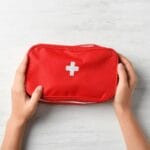With states loosening up social distancing and self-isolation regulations and more establishments are re-opening their doors, you might be embracing the new norm physically.
COVID-19, however, is still active.
Currently, the virus continues to spread, which presents a problem as health officials remain unsure of the consequences that can arise as a result of the infection. Until health authorities and the government can determine how every case happened and can track every active case’s movements, your protection is up to you.
Will drinking an immune superfood drink mix help? Should you wear additional layers of clothes? Is spraying more hand sanitizer helpful? These are some considerations as you head back into the world. Also, consider the following to guard yourself against the infection.
Always Disinfect Your Devices and Gadgets
A study by the University of Arizona revealed that mobile phones carry 10 times more bacteria than toilet seats. Since most people are constantly on their phones, they are constantly spreading bacteria and germs from their phones to their hands/faces and vice versa.
Since phones serve as an extension of your hands, it’s best to treat them the same way you treat your hands. Once you get home from work, use a disinfectant wipe to clean your phone after you wash your hands.
For your computer desktops and laptops, there are fewer risks if you keep them at home all the time. You can probably get away with disinfecting them less regularly.
Wash Your Face Masks
The Centers for Disease Control and Prevention (CDC) recommends washing face masks after every use. If you don’t have the time to launder them, soak them in a disinfectant solution for five minutes. The primary ingredient is bleach. You can do one of the following mixtures:
- Four teaspoons of household bleach per quart of room temperature
- Or five tablespoons per gallon of room temperature.
Once you’ve soaked the mask, rinse it thoroughly with a room or cool temperature water. You can also soak your face masks in hot water with detergent or soap for about 10 minutes. Doing so will kill the virus, as well as remove any grime/dirt/oil from the fabric. Depending on the nature of the fabric, you can use a dryer, too.
If You’re Sick, Stay at Home
Even if you’re not COVID-19 positive, stay at home when you are sick. Symptoms of COVID-19 include those similar to a cold or flu with a fever, which include shortness of breath and coughing. Also, the symptoms can appear as early as two days and as late as 14 days post-exposure.
If you’re feeling sick, stay at home and keep those around you from getting sick, as well. If you have symptoms related to COVID-19, the first step is to get in touch with your healthcare provider. They can offer proper treatment, as well as notify public officials.
Boost Your Immune System
Your immune system is your best defense against the virus. Strengthen it to strengthen your defenses.
Boost your immune system by eating a variety of colored fruits and vegetables. Depending on the color, these fruits and veggies can give the body vitamins A, B9, B12, Vitamin C, D, as well as minerals that enhance your immune system. Run the extra mile by avoiding processed foods and indulging in superfoods instead.
Wear a Barrier When Using Public Transportation
If you have to use the public transport system to get to work, the CDC suggests wearing a mask and other facial barriers (e.g. a face shield). The barrier protection prevents the spread of infectious disease, which is incredibly helpful, especially if you’re taking the bus or other forms of public transportation.
Practice Social Distancing
This rule cannot be stressed enough. Social distancing saves lives.
It is exactly what it sounds like: keeping your distance from other people. Social distancing joins a list of public health measures imposed by local and state governments — measures like closing schools, practicing self-quarantine and canceling social gatherings. When it’s done enough during the pandemic, it can reduce the spread of infection.
Here’s how to properly do it:
- Keep your distance from others by 6 feet, which is the distance respiratory droplets from a sneeze or cough travel.
- Avoid shaking hands or hugging. If you are meeting friends or colleagues, mind your distance, and find another way of greeting. While fist bumps and high fives can transfer fewer viruses than a hug or handshake, no-contact options are still better. Settle for a wave or a nod. If you feel fancier, tip your hat or curtsy.
Embracing the new normal mean embracing extra precautionary measures. As you go back to the outside world, practice these measures to keep yourself, your loved ones and the rest of your community safe.





